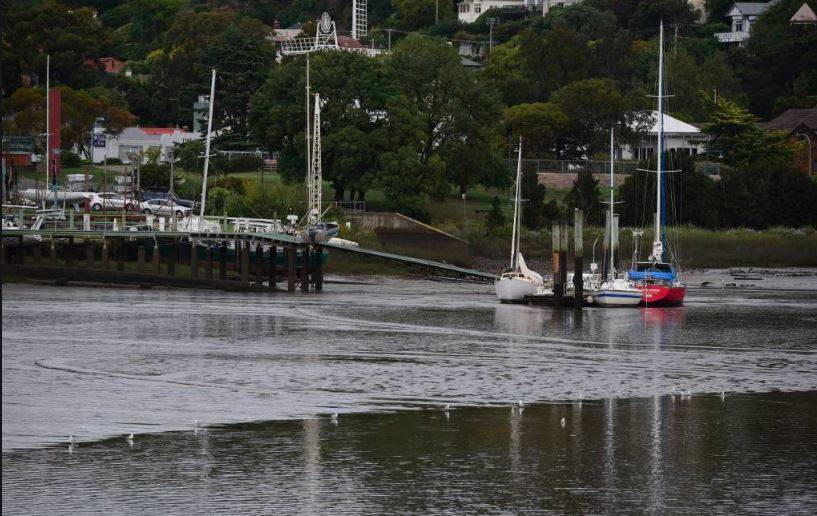OP-ED: A Single Tamar Authority Worth Discussing
- genevievecooley
- Mar 19, 2020
- 3 min read
Thursday 19 March 2020, The Examiner

THE Tamar River, or Kanamaluka, which runs through our wonderful city of Launceston, has experienced some extraordinary changes since Launceston developed and it changes drastically every year. As an estuary leading out to sea, the Tamar naturally shifts from fresh to saltwater during the year with ebb and flood tides, and along with the changing weather, develops mudflats which, whilst unpleasant to look at, are a part of the natural cycle. Dredging, a process to drag along the bottom of the waterway to artificially deepen it, has historically been used as a way to move larger vessels into, and back out of the river. It is a practice which continues to be brought up as a possible solution to target the mudflats to "clean" the river but, as they continue forming despite this, dredging has more or less been debunked as a practical solution to restore the Tamar to optimal health. It was also found that dredging in times of high floods, while somewhat successful in removing silt, had detrimental effects further downstream. While the mudflats are aesthetically displeasing, I believe the biggest issue by far is the amount of faecal matter in our river. In Launceston, our combined drainage system involving over 9200 homes, was constructed in the 1860s and during periods of heavy rain, has no option but to release stormwater and raw or partly treated sewage into the waterways. In 2018-19, there were 15 spills due to wet weather ranging from 400,000 litres to one consisting of 1.2 million litres. A river, running through a city, containing combined stormwater and sewage is not what you would expect to see in a first-world country and is not something that we should be willing to tolerate. I note TasWater and the state government have a 10-year plan with a new secondary treatment plant to cut raw sewage emissions into the Tamar estuary at a cost of around $285 million and I believe this should happen much earlier. In the meantime, we have the River Health Action Plan, an initiative developed under the Launceston City Deal, which details the main issues affecting river health and quality and establishes a framework to resolve the most pressing issues. The taskforce has quite rightly decided to make its initial focus to look "at actions to improve public health measures", "eg. faecal contamination from human and other sources as measured by enterococci levels in the water". The $100 million under the Launceston City Deal has been provided to address this and much of this funding will go towards catchment works, such as fencing out livestock from the river and thus reducing contamination. More of this funding will go towards improving combined system catchments. It is expected that a considerable amount of the contaminants that enter the Tamar will be eliminated once the combined system catchment improvements are made and it is hoped this will occur sooner rather than later. What enters the river upstream affects what occurs downstream and by monitoring and eliminating waste that goes in, river health as a whole will be improved. Leadership on the health and amenity of the Tamar River Estuary is required and the City Deal does present an opportunity to do this. While my sincerest hope is that there is adequate follow-through to ensure that our river is made an asset to our region and provides amenity for the generations to come, over the preceding decades there has been report after report and incalculable dollars spent on experts and working groups that it becomes more talk and less action. So many interests, individuals and groups have had a say in discussions on how to improve the Tamar's health from more Cataract Gorge flow to barrages or weirs but to date, we still have a river that is more of a liability than an asset to our city. We can only imagine the kind of interest and economic activity a clean, beautiful river would generate. There are plenty of issues and possible solutions on the table, but there seems no one group able to take responsibility and leadership, and the steps needed to improve the state of the river. This has to change. As the famous quote says "the definition of insanity is doing the same thing over and over again and expecting a different result". It has been suggested that a single authority could be established and charged with responsibility for the Tamar River, which is certainly a discussion worth having. Getting to the stage to task one organisation or authority with these responsibilities would likely be a challenge but the dividends would be extremely valuable and the state government should take notice of this as a possible course of action. We can only imagine he kind of interest and economic activity a clean, beautiful river would generate. Independent Launceston Legislative Councillor
Rosemary Armitage MLC



Comments